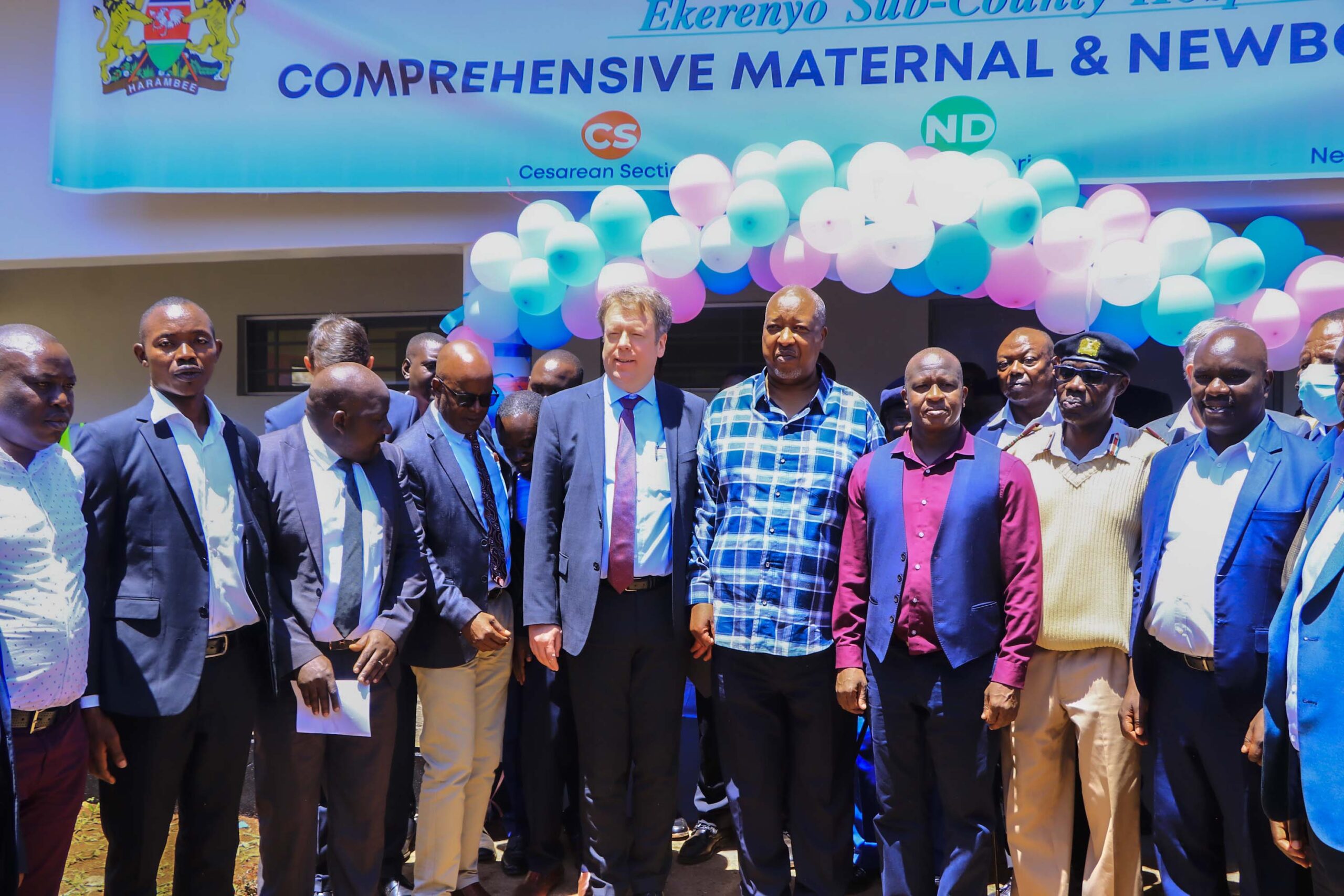
By Bitange Ndemo
Last week, in Brussels, I had the privilege to give a speech at World Vision’s launch of their latest report, Breaking the Cycle: The Cost of Malnutrition to Girls. Originally, I was meant to make a five-minute intervention, but when the chief guest failed to show up, I was asked to give the opening remarks. With the assistance of the Master of Ceremonies, I quickly put together what looked like a speech.
Inside me, I was deeply disturbed by the data. Nonetheless, the event started off well, and the panels that followed delved into the shameful plight of women in the 21st century.
I felt compelled to review the report and share it widely. It is a compelling and well-researched analysis of the devastating impact malnutrition has on girls worldwide.
It highlights the far-reaching consequences of hunger, not just on health, but also on education, income, and future generations. The report effectively combines data-driven insights with human stories, making the issue both urgent and personal.
One of its key strengths is its comprehensive coverage of the subject. The report presents a wealth of statistics and projections, quantifying the economic and social costs of malnutrition.
The analysis is further enriched by real-life case studies, such as Faith in Kenya and Ei in Myanmar, which bring to life the struggles that girls face due to hunger and food insecurity.
These personal narratives make the issue more relatable and underscore the urgency of intervention. Another strength is its clear policy recommendations.
The report does not simply outline the problem but provides concrete solutions, including expanding nutrition services, addressing gender inequality, leveraging schools for nutritional interventions, and increasing funding to address the root causes of malnutrition.
These recommendations are well thought out and supported by data, making them actionable for governments, NGOs, and policymakers.
However, while the report is well-supported by research, some areas could be improved. The economic calculations related to lost income and productivity could be explained in simpler terms for non-expert readers.
Additionally, while the report frequently cites data from sources like UNICEF, WHO, and FAO, some of the referenced studies date back several years. Including more recent data where available would strengthen its credibility.
Furthermore, while the report focuses heavily on Sub-Saharan Africa and South Asia—regions where malnutrition is most severe—it could benefit from a more global perspective, including insights from Latin America, Eastern Europe, and even high-income countries where food insecurity is an issue for marginalized communities.
You may be wondering what causes malnutrition in the 21st century among girls. The report states that it is a complex issue rooted in a combination of social, economic, and environmental factors.
Poverty continues to be a significant contributor, forcing many struggling families to prioritize feeding boys over girls.
In many cultures, gender norms dictate that men and boys receive the best portions of food, while girls are left with less nutritious options.
In some communities, only men can eat chicken that is often prepared by women. This disparity in food distribution leads to chronic undernourishment, which affects girls from an early age.
Beyond poverty, climate change has played a growing role in exacerbating malnutrition. Extreme weather events, such as droughts and floods, destroy crops and reduce food availability, leaving millions of families in a state of food insecurity.
Conflict and displacement further worsen the situation, as wars disrupt food supply chains and force families to flee their homes, leaving them without stable access to food.
Refugee camps, where many displaced girls end up, are often ill-equipped to provide adequate nutrition, worsening their vulnerability.
Another major cause of malnutrition is poor maternal health. When pregnant women do not receive adequate nutrition, they are more likely to give birth to low-weight babies who are at higher risk of stunting and malnutrition.
This issue is further compounded by a lack of education, as many girls and women are not aware of the importance of a balanced diet.
In communities where education for girls is not prioritized, knowledge about nutrition and health remains limited, contributing to long-term cycles of malnourishment.
The rise of ultra-processed foods has also played a role in worsening malnutrition. In many urban areas, even families who can afford food often rely on cheap, processed options that are high in sugars and unhealthy fats but lack essential vitamins and minerals.
As a result, many girls experience “hidden hunger,” where they consume enough calories but still suffer from severe nutrient deficiencies.
The impacts of malnutrition on girls are devastating and long-lasting. Physically, malnourished girls are more likely to suffer from stunted growth, weakened immune systems, and increased vulnerability to diseases.
Malnutrition during adolescence also poses serious risks during pregnancy and childbirth, increasing the likelihood of complications and maternal mortality.
Furthermore, girls suffering from iron-deficiency anemia often experience extreme fatigue, which affects their ability to concentrate in school, leading to poor academic performance and higher dropout rates.
Education and malnutrition are deeply interconnected. Studies have shown that malnourished girls are less likely to complete secondary school, limiting their future job opportunities and earning potential.
Without adequate education, many of these girls remain trapped in poverty, unable to break free from the cycle of malnutrition.
The economic consequences extend beyond the individual; globally, malnutrition in girls contributes to an estimated $1.6 trillion in lost productivity each year.
Beyond economic losses, malnutrition also increases the risk of child marriage. In many communities, families struggling with food insecurity see early marriage as a means of securing financial stability.
Girls are often married off in exchange for dowries or to reduce the burden of feeding another child. Once married, these girls are more likely to experience early pregnancies, which not only put their health at risk but also continue the cycle of malnutrition into the next generation.
The report “Breaking the Cycle: The Cost of Malnutrition to Girls” serves as a critical call to action, highlighting the profound and multifaceted impact of malnutrition on girls worldwide.
Through comprehensive research, compelling narratives, and actionable recommendations, it underscores the urgent need for global intervention to address the root causes of this issue and to create a future where every girl can thrive.
Bitange Ndemo is the Kenya’s Ambassador to Belgium & EU



